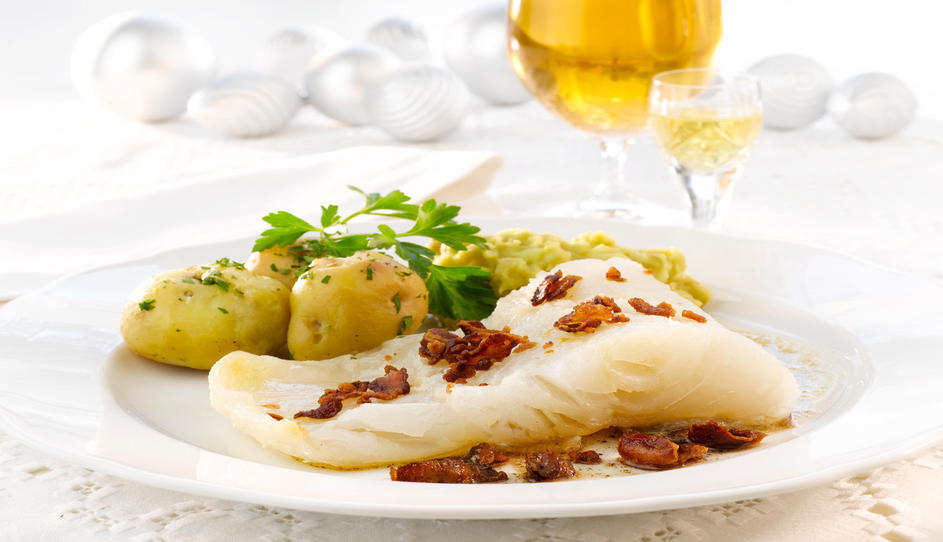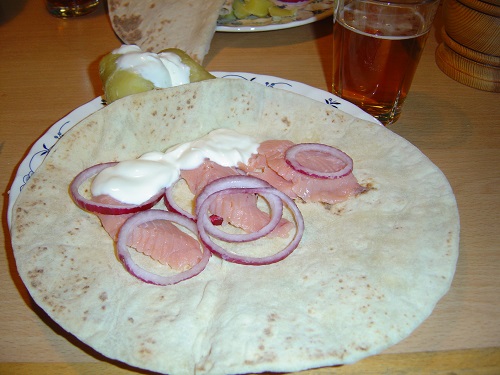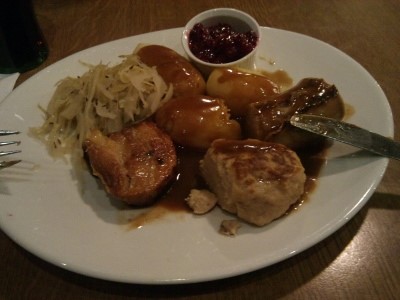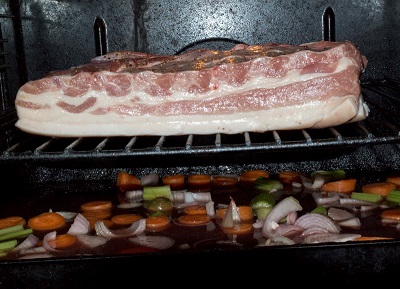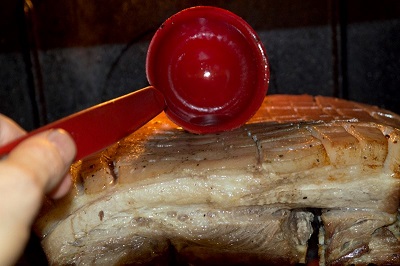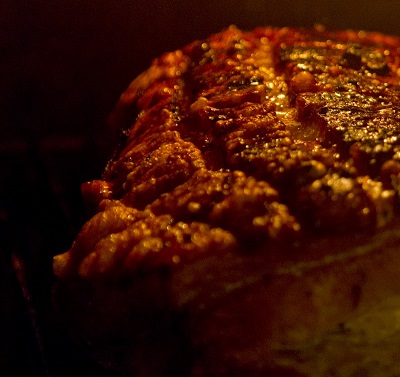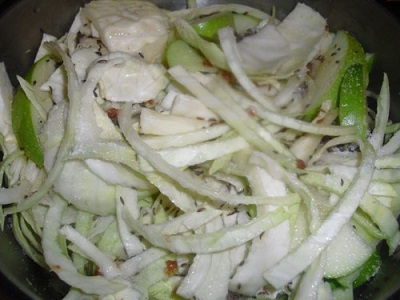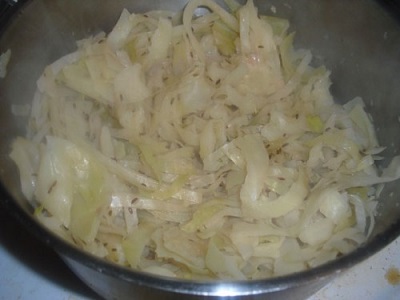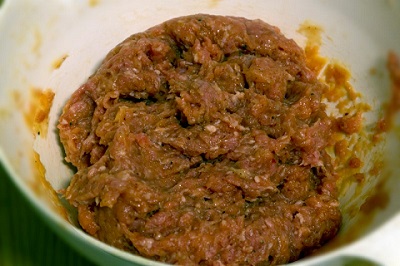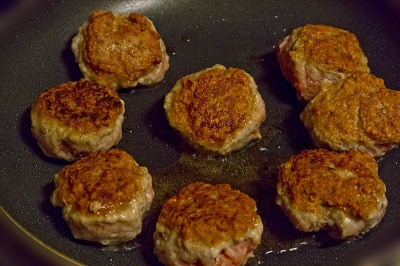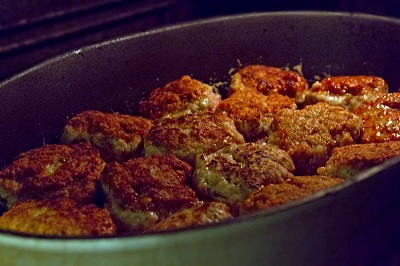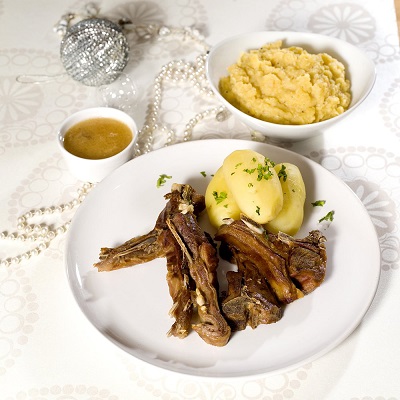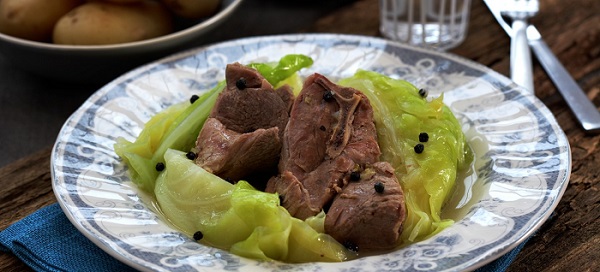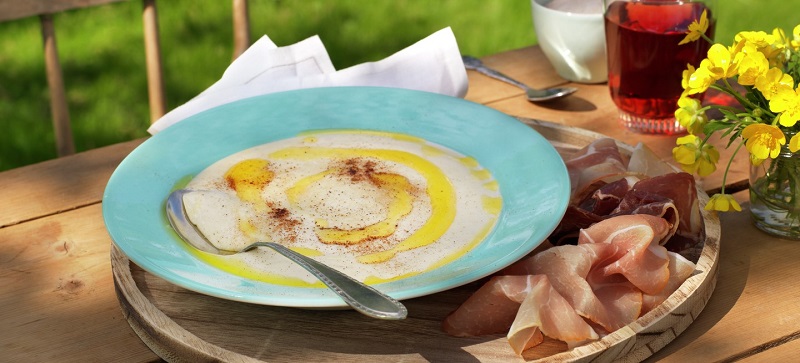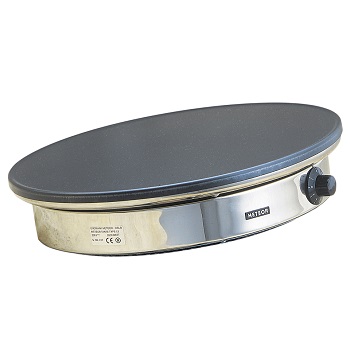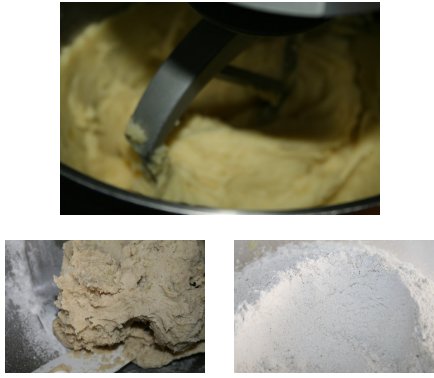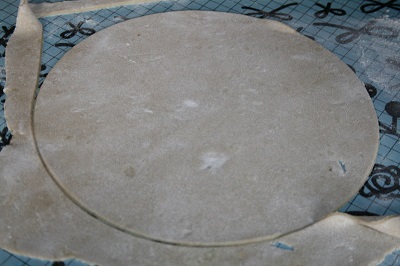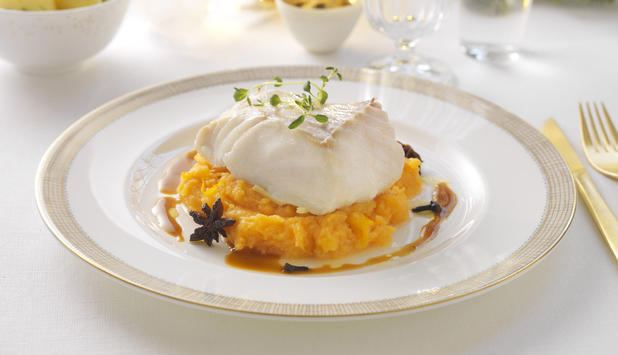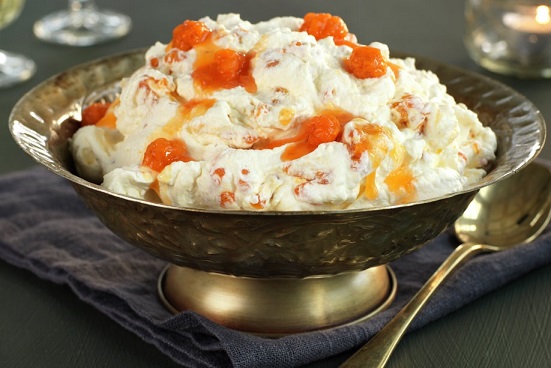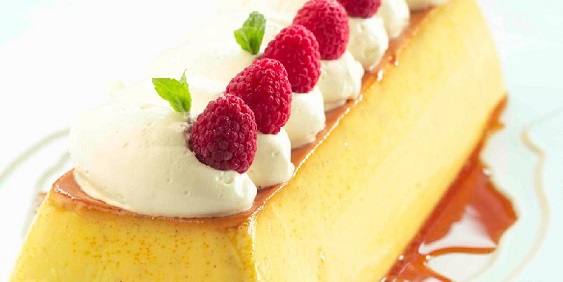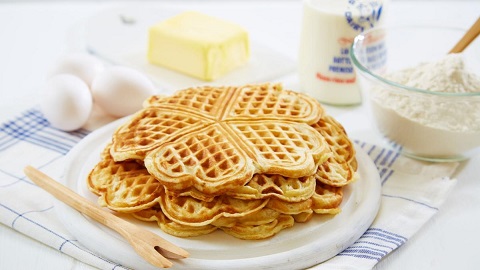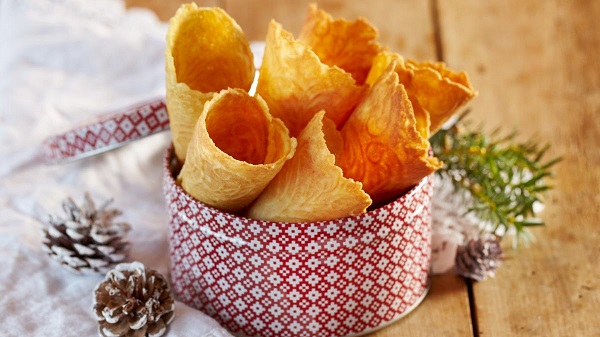BLØTKAKE (Norwegian layered cream cake)
The traditional cake which is used for large and small occasions today. Every bakery with respect for themselves
in Norway have at least one version of cream cake in the store.

Ingredients:
16 Servings
Sukkerbrød (Sponge cake):
* 5 egg
* 150 g sugar (aprox. 5.3 ounces)
* 150 g flour (aprox. 5.3 ounces)
* 1 teaspoon baking soda
Fill and decorations:
* 4 dl whipping cream (approx. 1.7 cups)
* 2 tablespoon icing sugar
* ca. 1 dl milk or apple juice for soaking (approx. 3/8 cups)
* 8 tablespoon strawberry jam
* 50 g coarsely chopped walnut kernels (approx. 1.8 ounces)
* 1 banana for the filling
* 2 baskets strawberries
This is what you do:
1. Preheat oven to 160 degrees Celsius (320 degrees Fahrenheit).
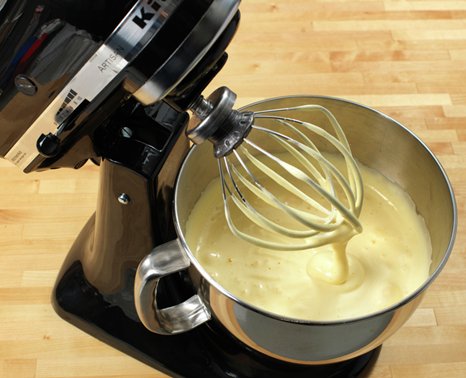
2. Whip eggs and sugar until airy and stiff eggnog, 6-8 minutes.
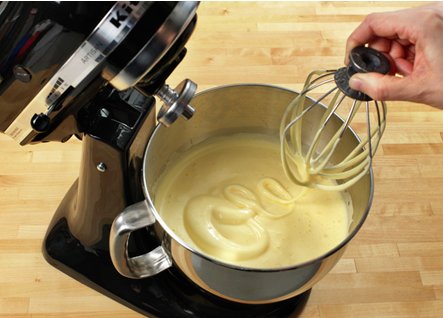
Use room temperature eggs, they have a better whip ability and provides a more fluffy. When is the
egg mixture stiff enough? Write "Ole" with the whisk, can you see the whole name before egg mixture
flows out is it finished.
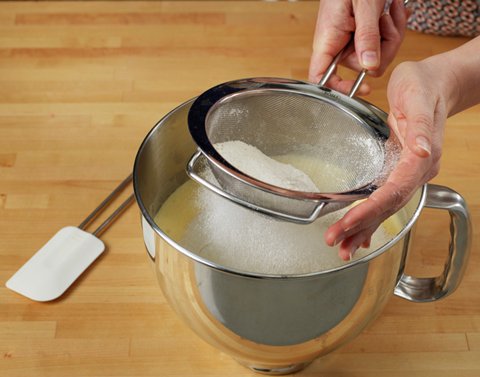
3. Sift the flour and baking powder in the bowl of eggnog.
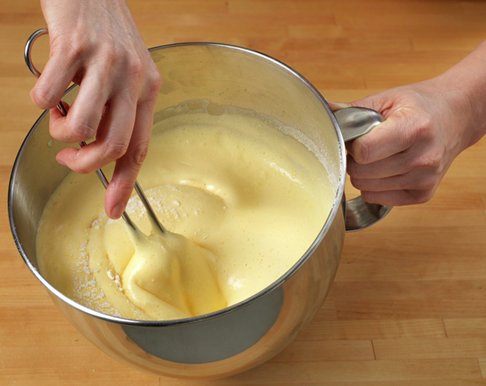
4. Flip the flour gently into the egg mixture with a spatula. Use gentle movements and mix
until it is no longer melklumper the batter. Also remember to look for flour lumps in the bottom of the bowl.
5. Put baking paper in the bottom of a springform of 24 cm in diameter. Grease the pan with butter.
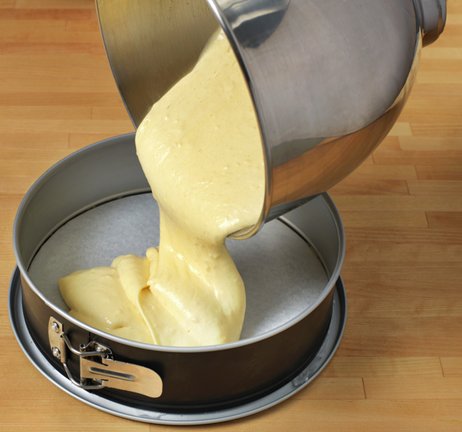
6. Pour the mixture into the mold in a zig zag pattern and apply lightly back and forth with the spatula so that the surface becomes smooth.
7. Place the dish on the bottom shelf of the oven and bake for about 40 minutes into the sponge cake has risen well, are golden and cooked through.
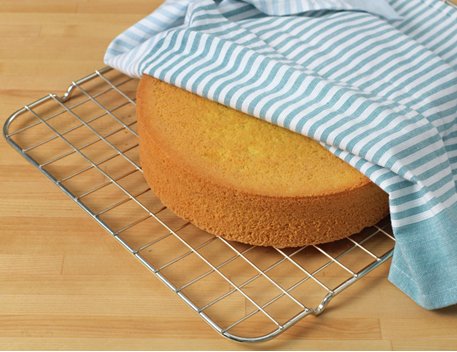
8. Let the sponge cake cool in the pan a few minutes before it is vaulted over the grate. Add over a clean kitchen towel and refrigerate sponge cake.
Sponge cake can be wrapped in plastic wrap and freeze if you do not want to fill it right away.
9. Whip heavy cream stiff with powdered sugar (not too sweet).
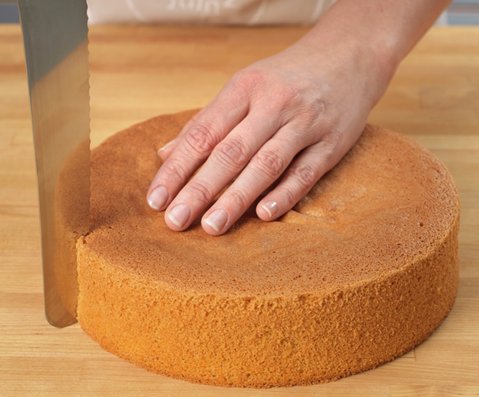
10. Cut a small incision vertically on sugar bread. When cake base fills and layers laid on top of each other will cut be helpful to get a smooth cake.
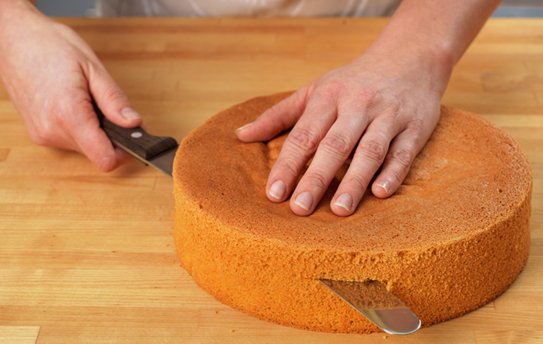
11. Part the sponge cake into three layers.
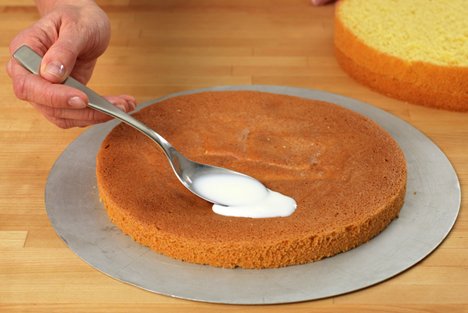
12. Add one of the teams on a platter and soak it with a little milk.
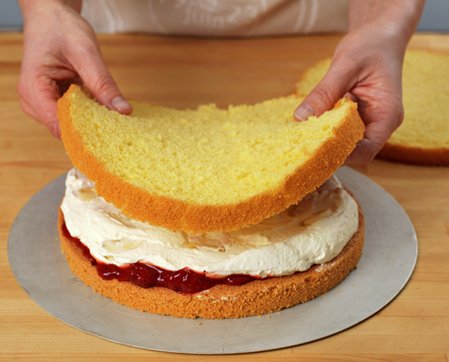
13. Apply light strawberry jam. Wear the cream and walnuts. Butter cream out in an even layer, put the banana and a new sponge layer. Repeat the process.
Feel free to fill with fruits and flavors you love.
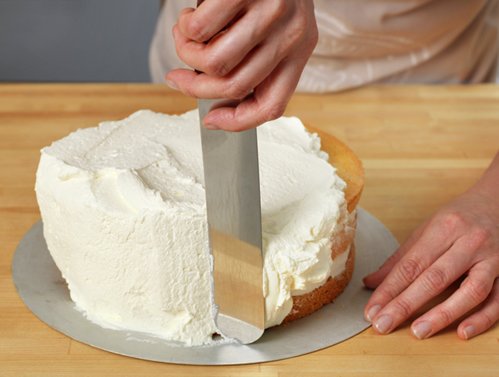
14. Add finally cream in an even layer of the cake with a cake palette. Use plenty of cream in front of palette knife when doing this so as to avoid crumbs from
the cake base in the cream.
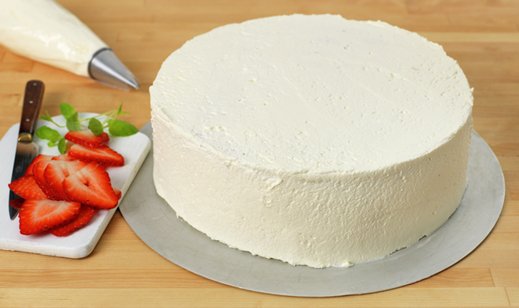
15. Put some whipped cream in a piping bag with a small round tip for decorating around the edge. Share strawberries into thin slices and soak the cake is
ready to be decorated.
Advanced version:
16. Dress cake with marzipan. Use your palms to stroke gently along the edge, while stretching the light in marzipan. Then you get a smooth and nice
cake without folds. Use a thin pointed knife and cut away the marzipan around the edge to finish.
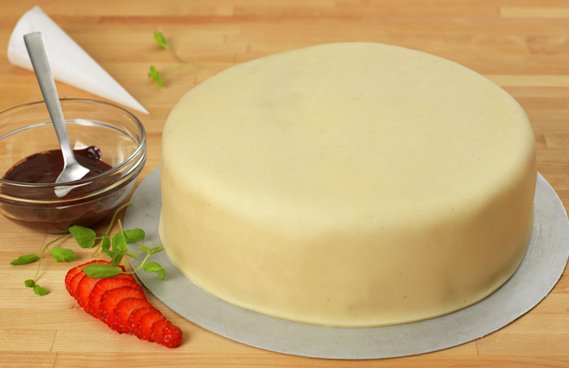
17. Melt the chocolate in a small bowl over a double boiler, or in the microwave, but make sure it is not scorching. Cut strawberries into slices.
Make a small cone and fill in the melted chocolate. The cake is ready for decorating.
